Research
Overview
Development of polymer materials using data science
The Data-Driven Polymer Design Group is challenging a paradigm shift from materials development relying on experience and intuition to materials development utilizing big data, computation, and information science.
Polymers are diverse materials. Various factors such as mechanical properties, thermophysical properties, and electronic and optical functions are intricately intertwined to create the unique properties of polymers. Therefore, the development of polymeric materials has been a field where the experience and intuition of researchers and engineers have been the key.
The essence of our challenge lies in the extent to which data science can penetrate the complexity of polymeric materials.
Using data and creating data. Each of these is a new challenge, and we hope to create an innovative scheme for polymeric materials development in order to achieve the paradigm shift that lies ahead.
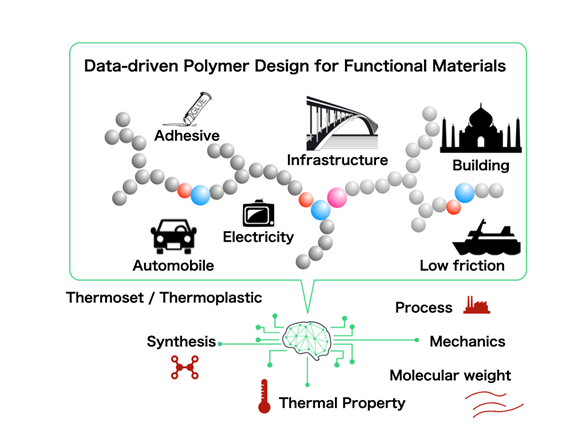
Research Content1(Masanobu Naito)
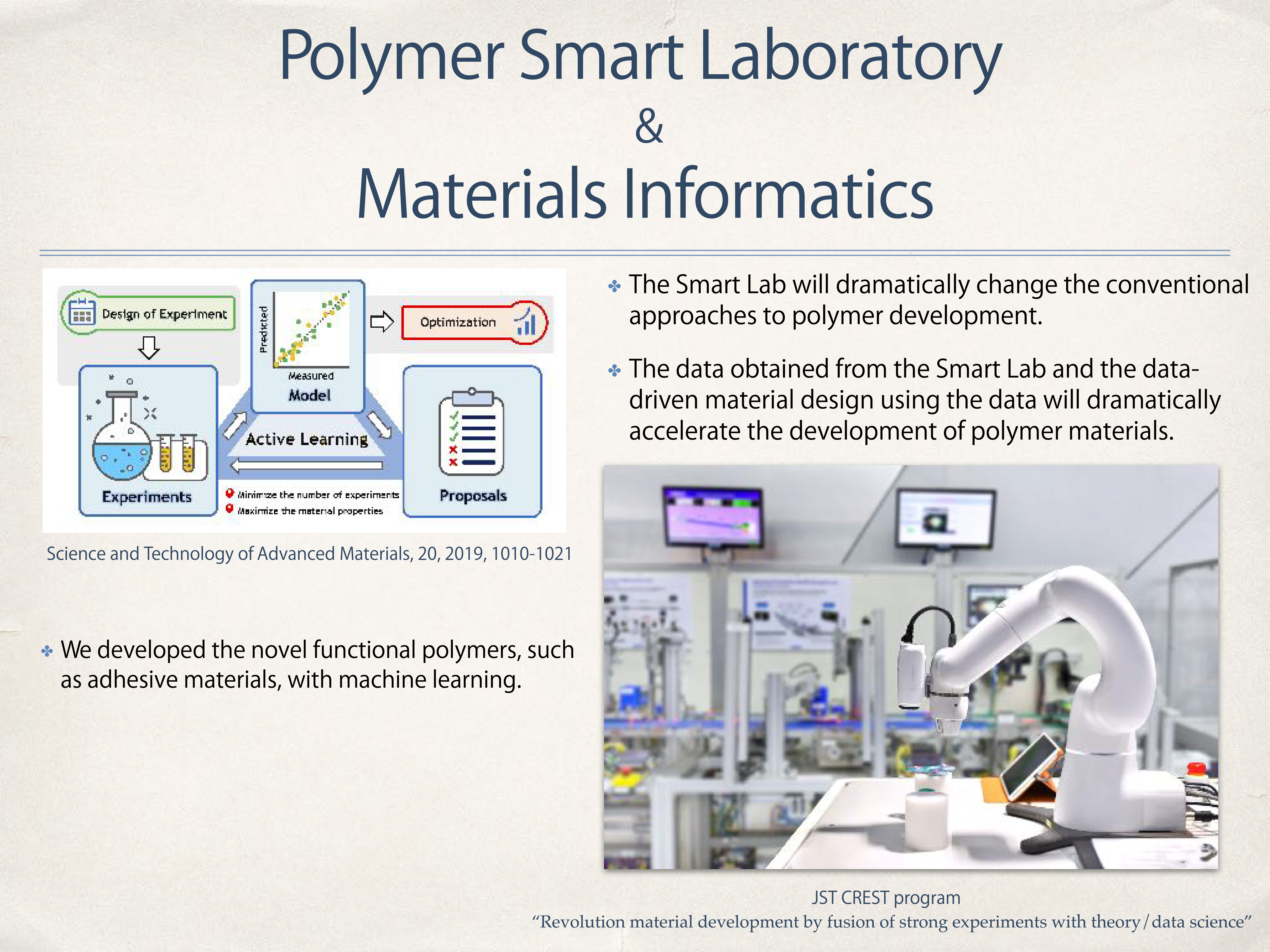
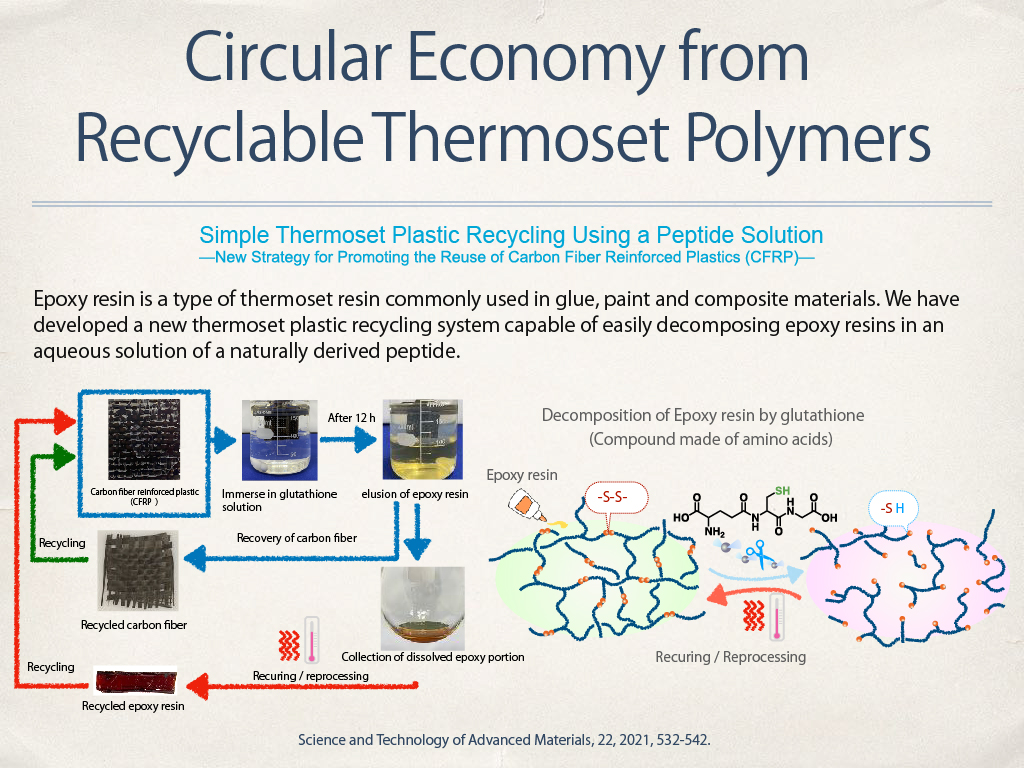
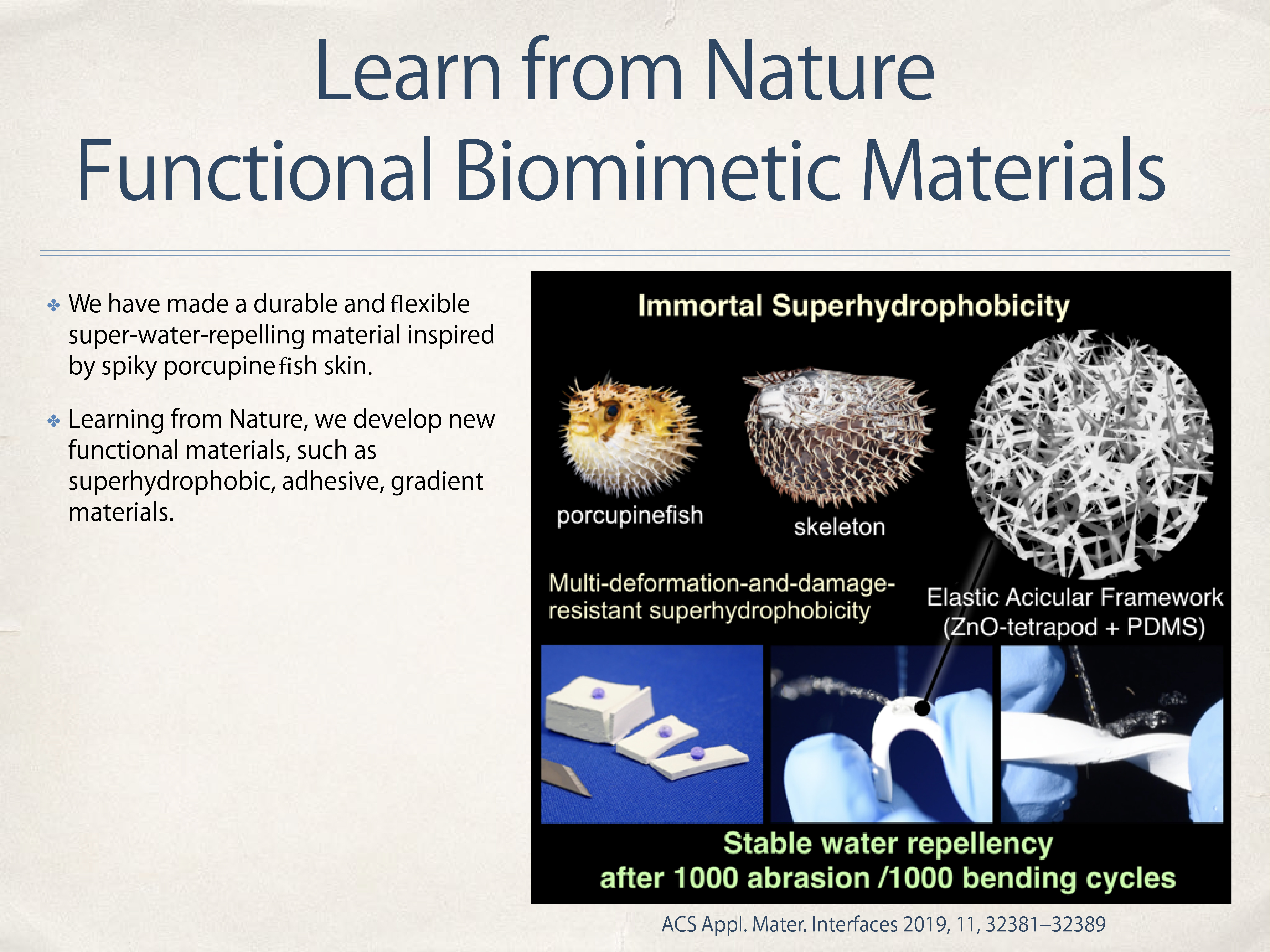
My research focuses on the application of polymers with various functions to films and adhesives. Recently, we are also working on the integration of machine learning and material development.
Research keywords
Machine learning, biomimetics, adhesion
Research Content2(Sadaki Samitsu)
Porous polymers: fabrication, characterization, and applications
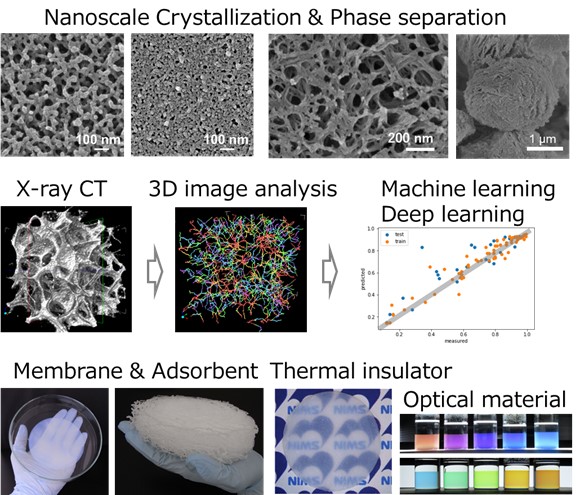
We are doing researches on "porous polymers", which are plastics and rubbers with pores inside. Porous polymers are widely used in daily necessities such as cosmetic puffs and insulation foams, as well as in advanced devices such as battery separators and hollow fiber filters for medical use. If you look around you carefully and deeply, you will see that porous polymers are used in a variety of applications. They play important roles on expanding our comfortable lifestyles. In addition to porous polymers, natural materials and biomaterials such as wood and bone are also widely used in porous structures.
In order to freely utilize these porous materials, we are challenging to develop new applications by our fabrication methods creating the porous structure from nano to macro scales and making optimal shapes (membranes, fibers, particles, monoliths, etc.). Advanced characterization instrumentation for three-dimensional and multi-scale structure analysis and new AI technology for materials science are one of our key technologies to open new researches. We are challenging new applications of porous polymers in order to address new social demands of our society. Through these researches, we hope to rebuild science and technologies of porous polymers by questioning the essence of "nothingness" with the aim of creating new materials, while anticipating encounters with a world we have yet to see.
The reason why these porous polymers are industrially useful and interesting as research targets is that the "absence of material" (i.e., pores) is the ultimate multifunctional material, creating a variety of unique functions that cannot be realized with materials without pores. Examples of such functions include lightweight, buffering, separation, adsorption, retention, heat insulation, and acoustics. By combining these functions, numerous porous polymers have been created and are used in a wide variety of applications in a wide range of industrial fields. We are working to develop new porous polymers to tackle global challenges and solve social issues.
Keyword
porous polymer, mesoporous material, nanocrystallization, separation membrane, thermal insulator, sound absorption, X-ray CT, three-dimensional structure (3D structure), image analysis, machine learning, deep learning, phase separation, porous fiber, nanofiber, microparticle, transparent material, translucent material, nanocomposite
Research Content3(Yasuyuki Nakamura)
材料の性質を分子の特徴からとらえ、高分子材料を創る「高分子合成」、「有機・高分子化学」の研究を行っています。精密重合反応や高分子反応を利用して高分子の構造と性質を操り、特徴的な物性を持つ材料の開発を目指しています。
Keyword
高分子化学、精密重合、自動化を利用した合成開発
Molecular Chemistry toward Polymeric/Organic Materials
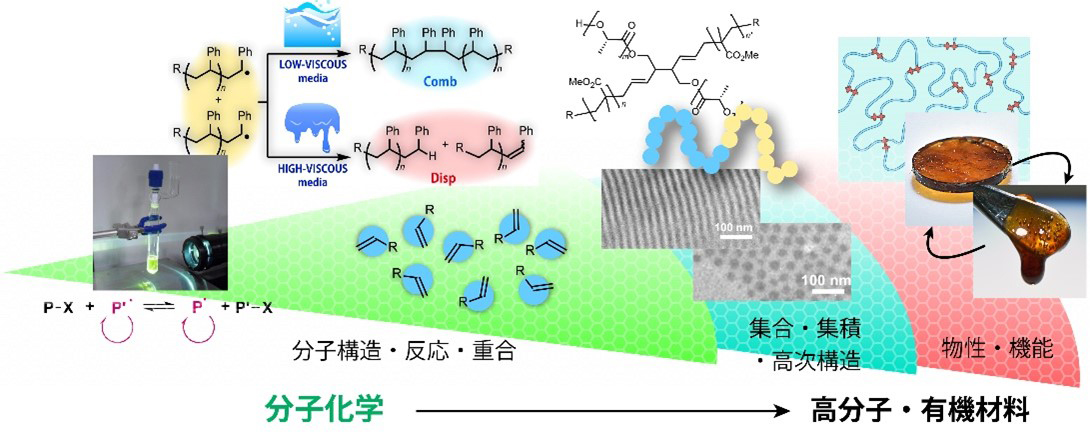
Polymer materials used in our lives are all be constructed by molecules. The molecular structures of polymers determine various fundamental properties such as color and density, as well as the material characteristics such as solvophilicity and elasticity. In addition, the molecular structures give us important information about the mechanisms of materials properties and changes, for example, a deterioration and a destruction.
Synthetic polymer chemistry is the only method that can create polymers from (monomer and raw material) molecules and chemical reactions. In particular, precision polymer synthesis techniques are indispensable to realize polymers with the desired molecular structures and material properties. We use these techniques effectively to investigate polymers which have designed and/or additional properties, and which respond to current social requirements like recyclability. In addition, we are intensively working for utilization of automation and machine learning as a new approach to synthetic development. We aim to develop new polymer materials originating from NIMS.
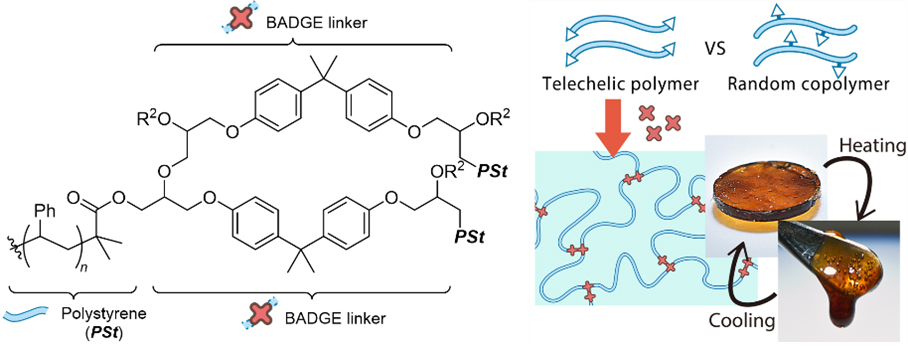
Figure. Crosslinked polymer with solid-fluid exchangeable property via thermally dynamic control of chemical functionalities.
Research Content3(Yusuke Hibi)
Pyrolysis mass spectrometry for analyzing oligomeric fragments which preserve sequence information
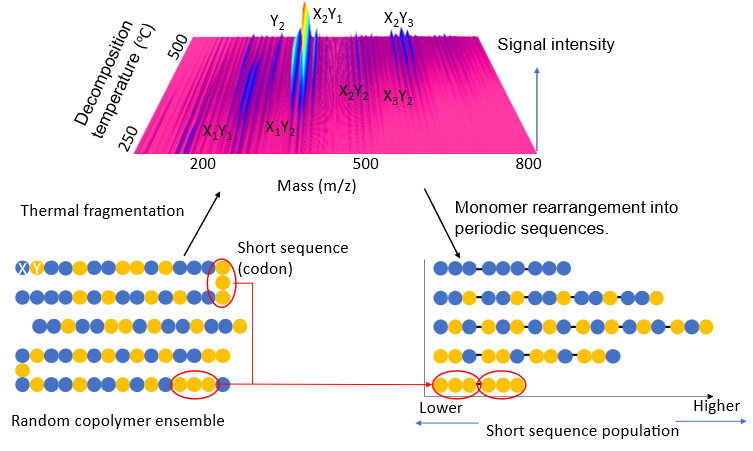
Pyrolysis mass spectrometry (Pyrolysis MS), which observes fragment chains produced by the thermal decomposition of polymers, can statistically describe polymer materials as ensembles of various primary structures. Using AI for quantitative analysis of Pyrolysis MS data allows the visualization of monomer sequences and key components responsible for material performance, aiming to accelerate polymer material development.
pagetop